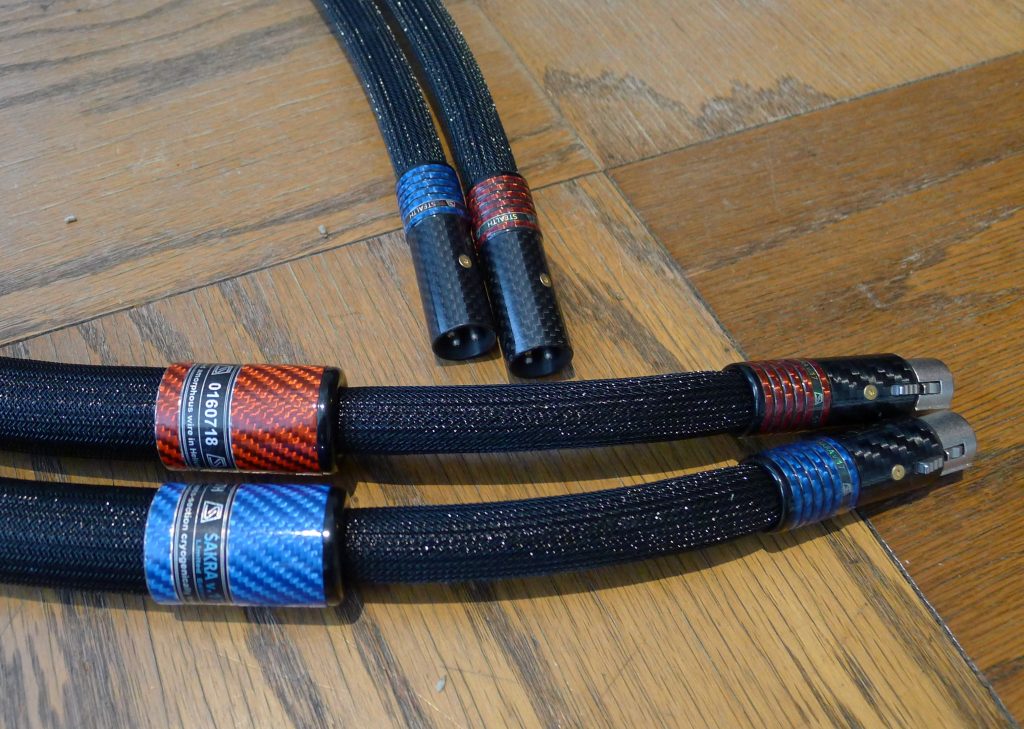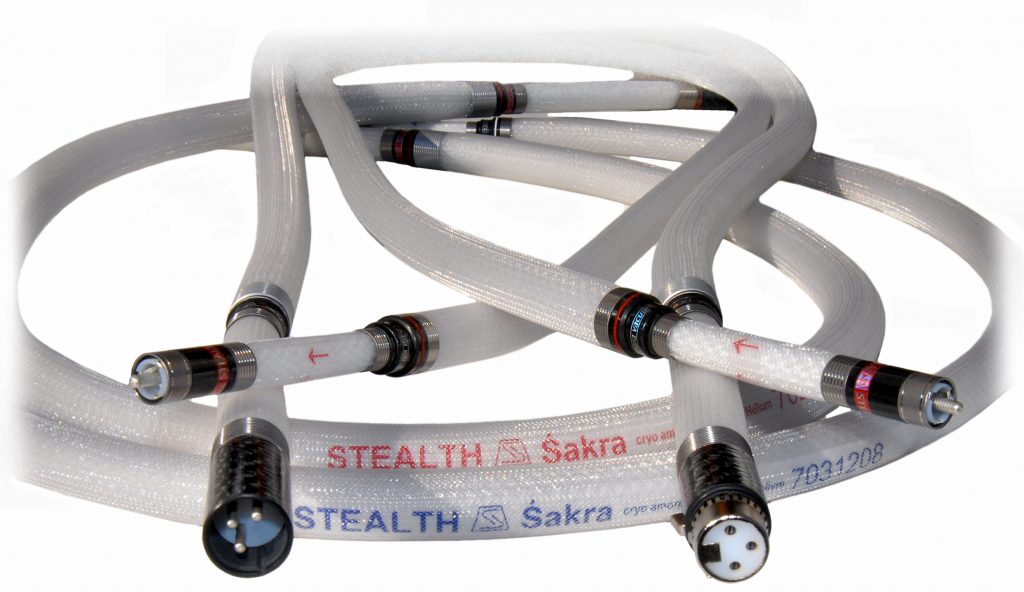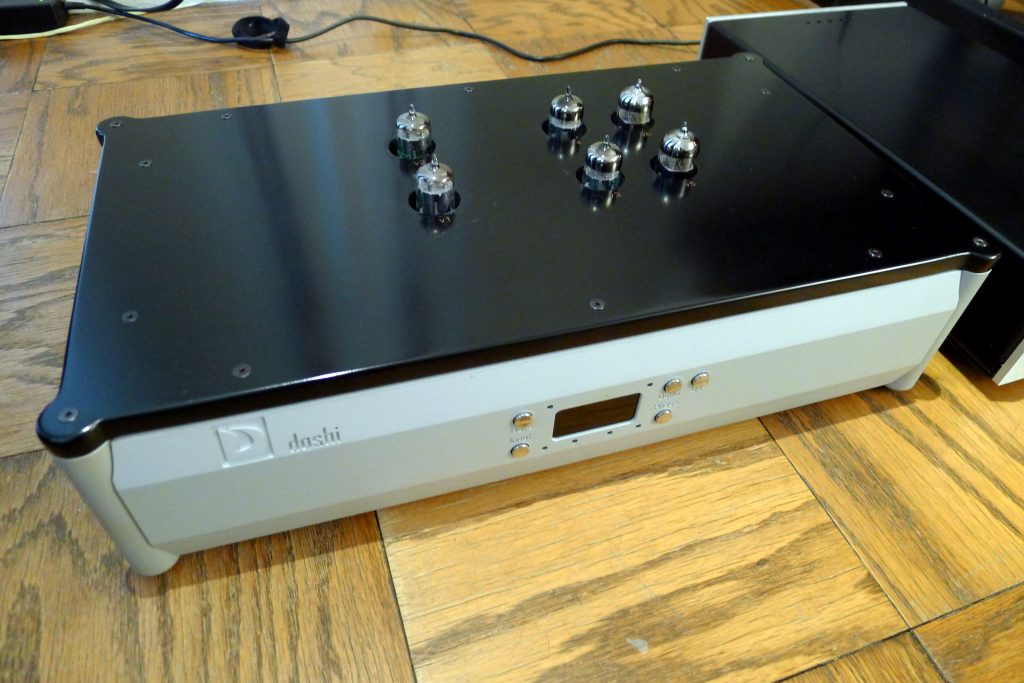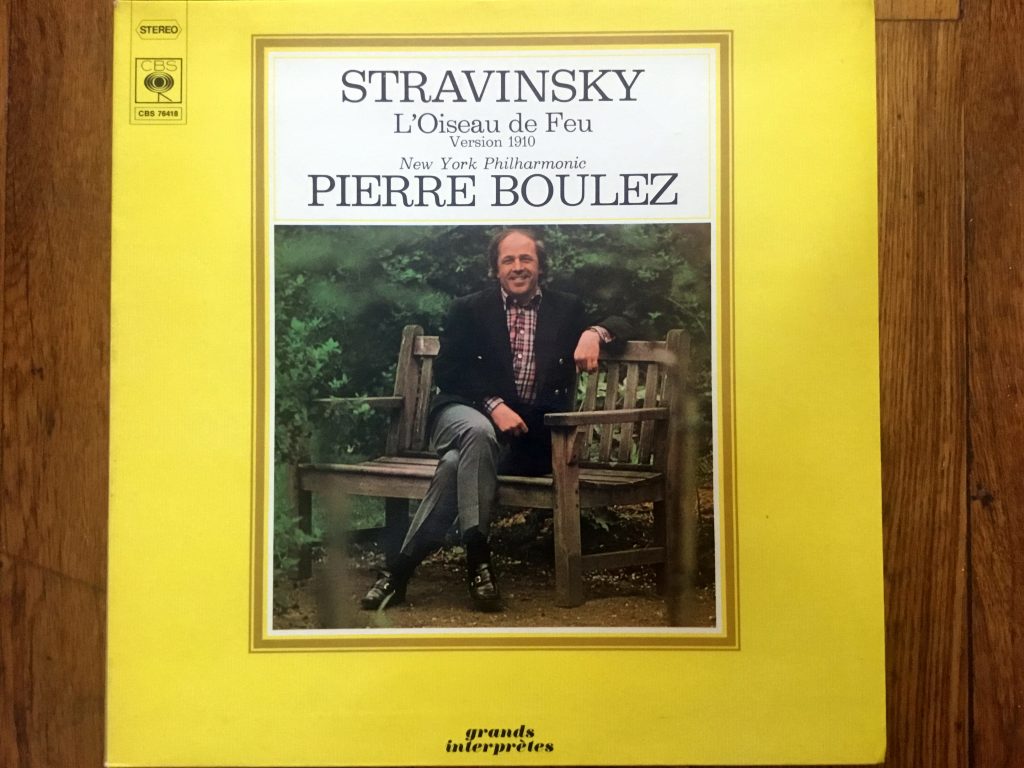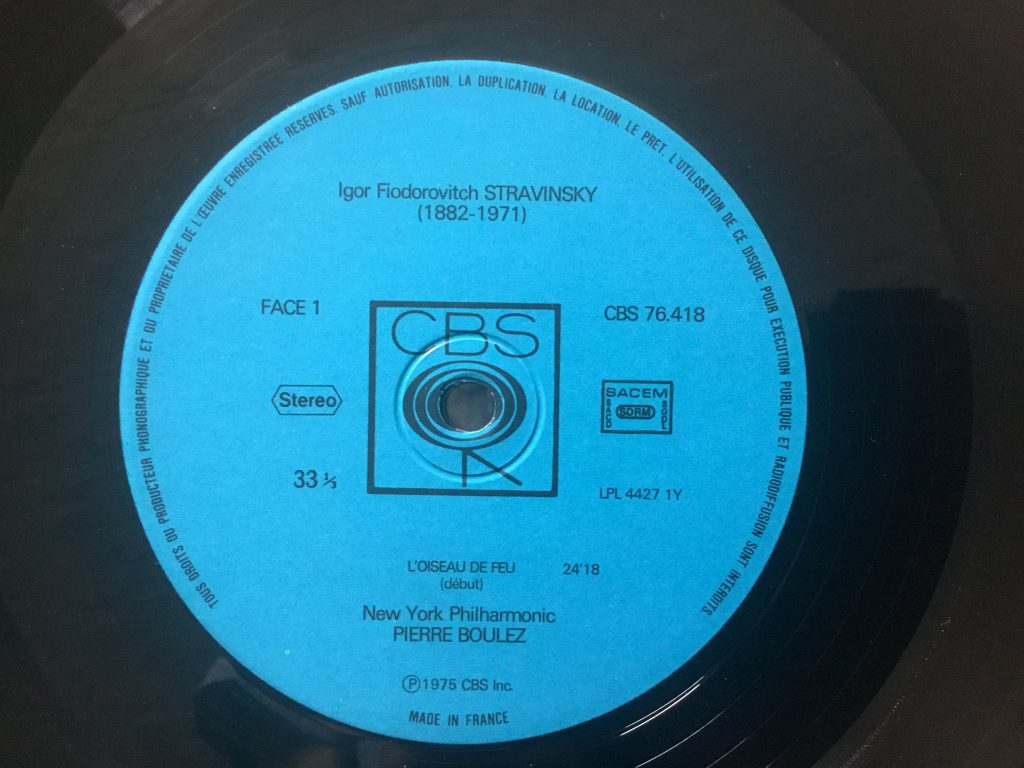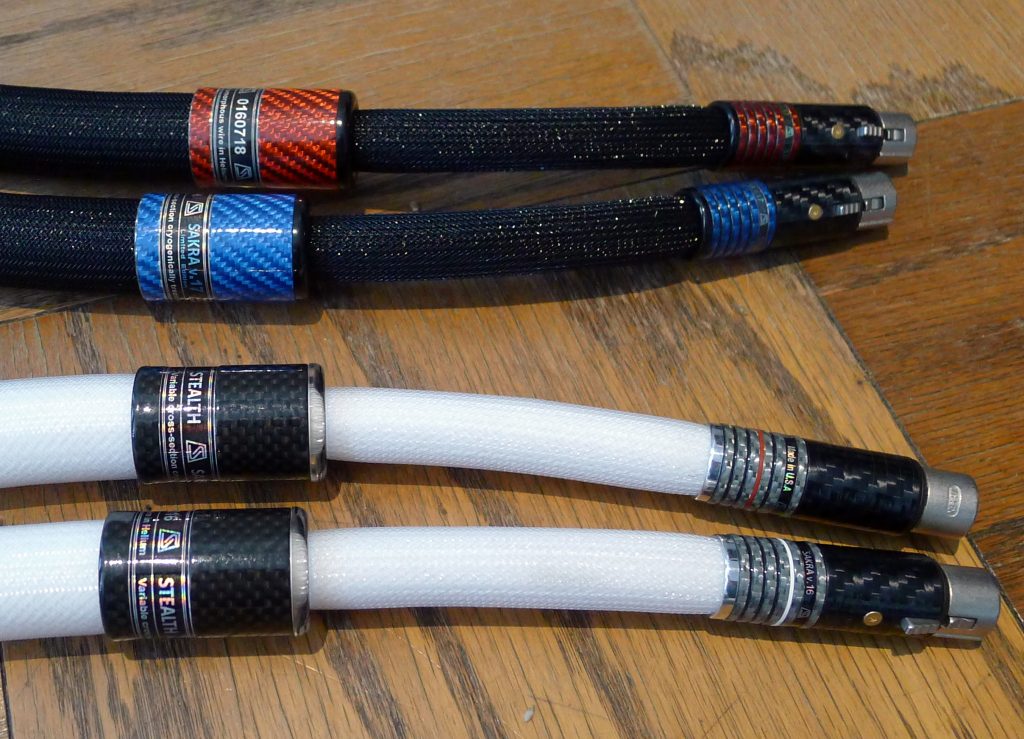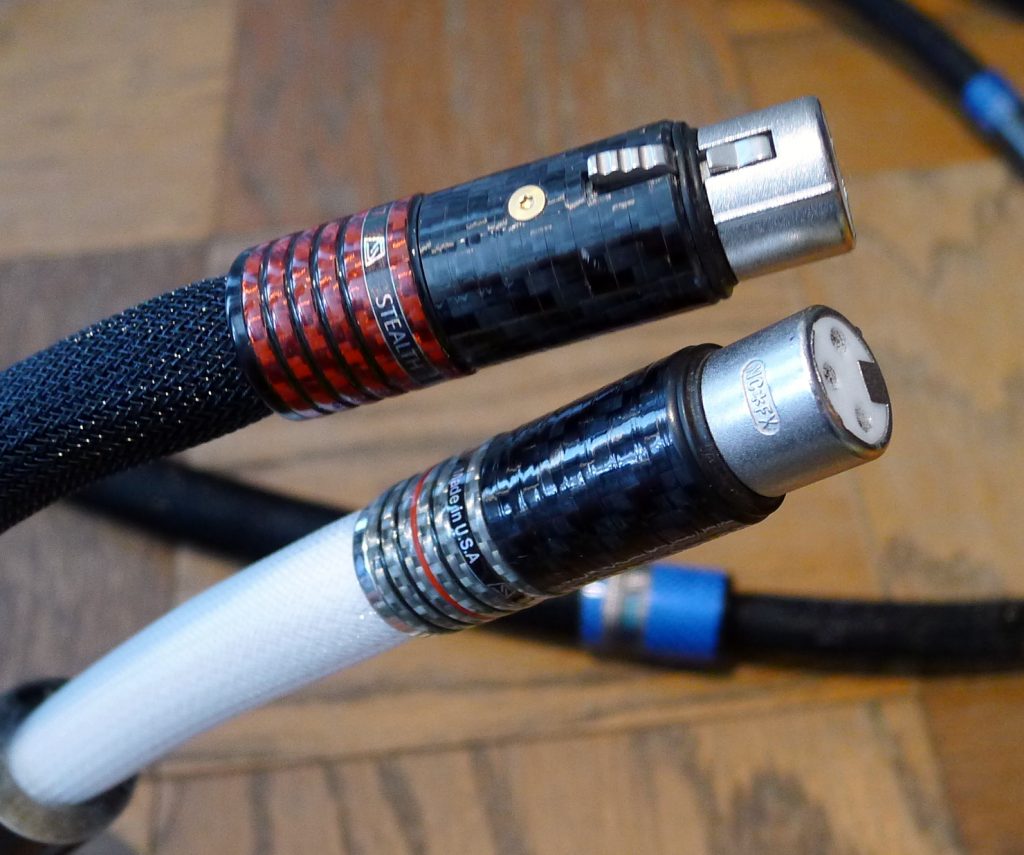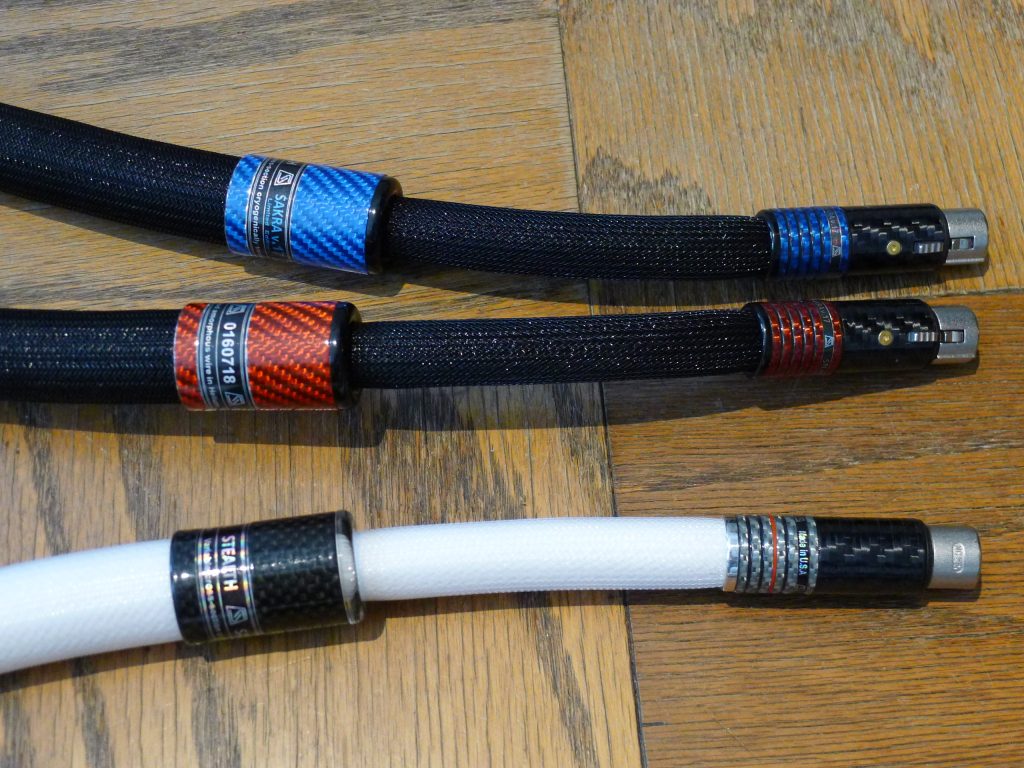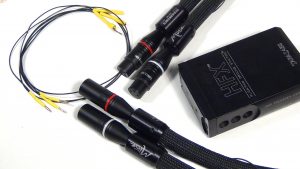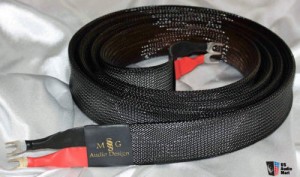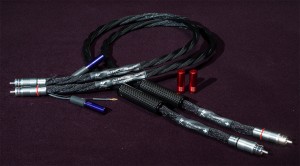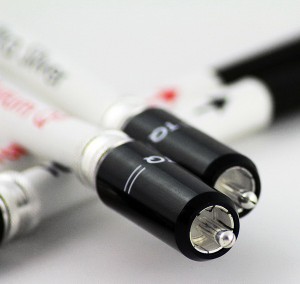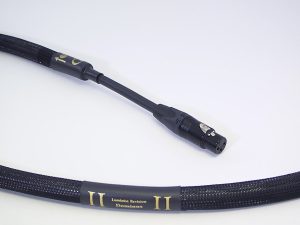One must be very comfortable perambulating interior space to be an audio wire designer. You spend your time juggling a limited number of variables in quest of the happy permutation that will result in a leg up over the competition. And contemplation only takes you so far. Prototypes must be built. Odds are high these will wind up in the pile over in that dark corner.
But juggle you must. Sometimes a client throws down the gauntlet and forces the issue. He owns your current top-of-the-line and dares you to reach higher—and he is willing to pay you whatever it takes.
Lo, the genesis story of the STEALTH Audio Sakra V17 Limited Edition interconnect.
Serguei Timachev, pencil portrait
Shortly after I posted a review of the Indra and Sakra interconnects (HERE), Serguei Timachev, the STEALTH designer, informed me the successor cable was in hand. It would be a limited-edition version of the Sakra interconnect and he inquired in his modest manner if I had any interest in comparing it to the Sakra V16 as a follow up.
"Holy cow!" My brain began to spin. Who doesn't love tinkering with statement products, especially when then the designer has credits like this one. I collected my thoughts and coolly emailed, "How significant were the differences?"
ST replied...
The Sakra V17 Limited Edition was designed for my local client—who wanted something better than our Sakra V16 and money was no-object... I am happy to report that the responses thus far are VERY positive and very exciting.
Sure, I was interested, except the project would have to wait until the right ancillaries were on the floor.
Sakra V16 prototypes
Prologue
You see, last year's review of the Indra and Sakra V16 was problematic. Simply put, the cables were not compatible with my CH Precision system. STEALTH and CH Precision both exert a strong grip over the signal. Pairing the two, the sum is predictable: a tight sound that repelled many listeners. In such a system, the cables were not seen in the best light. Nonetheless, I could tell they were something special.
A component with complementary characteristics was needed and I had an inkling of what that might be. Earlier in the year I spent time with the Doshi Audio Preamp V3.0, a tube hybrid device with abundant musical qualities. Getting the Doshi back would create the opportunity to give the Sakra the write-up it deserved and set the record straight. Well, the Doshi Preamp didn't come back, but in late December their Phono Stage was delivered. I kept my fingers crossed.
Doshi Phono V3.0
In short order my intuition was confirmed. The Phono Stage has precisely the same voicing. Nick Doshi knows what he's after and his products are voiced consistently. The equation now reads: strong grip + musical = balanced sound. Let's step through these wires on the Doshi Phono.
Sakra V16
At my next listening session, Joseph handed me Stravinsky's L'Oiseau de Feu with Pierre Boulez and the New York Philharmonic (CBS 76418), an amazing performance captured in brilliant sound. This LP is a total sleeper, but don't bother with the readily available American Columbia Masterworks LP. You have to get the hard to find French pressing. The CBS Mastersound half-speed mastered version is a better second choice.
The work begins with a subterranean growl not unlike the subway rumble heard in quiet moments at Carnegie Hall, a real death assignment for your subwoofers. My immediate concern was would the subs be able to hold on? They barely managed to, and I sighed with relief when it was over. Something musically worthwhile was transpiring, but hell if I could make it out; the murk was thick and impenetrable. As Joseph put it, "What is the scoring of this indistinct rumble?"
When that LP side was over, I swapped in the STEALTH Sakra V16 balanced interconnect for the Kubala•Sosna Elation! and cued the needle. Holy sheet! Jaws dropped serially across the panel with the first glimpse of the V16's vista. It dissipated the gloomy miasma and illuminated some of the proceedings, revealing muted cellos separating out of the deep growl, but the rest remained unidentifiable. To satisfy our curiosity, we enlisted Google to get the actual scoring, which also includes a bass drum roll and contrabasses divided between muted and pizzicato.
With the K•S interconnect, L'Oiseau de Feu unleashed crashing, fully expressed crescendos, even as it maintained a smooth and composed surface. Not a hint of stress was evident. The Sakra V16 told a different story. With a lighter tonal balance, bass was not as heavy and dynamic peaks not as thunderous (although it plunged equally deep). Occasionally sharp edges appeared in the treble, such as the near-distortion of a shattering cymbal crash or the near-breakup of French horn rim tones. These approached the point of stridency, but never actually trespassed that line. At those times, the Sakra V16 did not show the smooth surface of the K•S.
Those sharp edges in the treble drew critical comments from some visitors. Indeed, it is uncommon among top-level cables, which are supposed to be smooth all the time, right? But I did not find fault. On the contrary, I found it exciting and engaging. Unpleasant or not, this sort of thing happens in the concert hall. Those other cables were smoothing away the rough edges.
Sakra V17
When we shuffle in the Sakra V17 LE, it is almost as startling as when the V16 replaced the K•S. The LE brings a darker, weightier tonal balance, with a bottom-end potent like the K•S only tighter. When the LE went in a fresh layer of insight into the introductory rumble of L'Oiseau de Feu was exposed. My immediate reaction was, "Wow, that sure cleaned up the murk, didn't it?"
That occasional bite in the treble was still present, only it didn't come as close to the brink as the V16. The LE grasped the signal firmly and held it in safe territory. How it accomplishes these things touches on key differences between the two cables.
Sakra V16 vs. LE - First, What's Shared
But first, let's go over the commonalities. The Sakra (any version) has always been an industry leader in the recreation of dimension and space. The soundstage became elastic, stretching out front to back, sideways, in ways I can't find words for, and it changed with each LP I played. Depth layering is especially keenly delineated.
It leaves no ambiguity, no murkiness. Sakra images are large and healthy, sporting good body and mass, but not an ounce of fat. It is all taut flesh. Consequently, every inch of the stage is parseable. The degree of transparency is almost surreal—it could become disorienting. Your eyes take a walk-around and wherever they happen to linger information is to be retrieved. This is something I suspect most audiophiles have never experienced because few competitors can pull it off. It is actually a wonderful thing, a Holy Grail item in my book.
But what really sets the Sakra apart, what you're paying the big bucks for, is its genius at rendering timbre. It's as if we began drawing a picture with a box of 12 crayons and were gifted with one containing 64 colors. The Sakra distills timbres to their essence and, like I said, contains no excess, there is nothing superfluous. But nothing is missing, either.
Hence, each instrument attains uniqueness and sounds quite beautiful. It is a beauty that you don't get from 95% of the wires on the market. All wires cast colorations—everything does. This can be heavy, which translates into a lot of sameness in everything you hear; or, it can be light, which exposes differences. The Sakra ranks among the least colored.
It's also different from the kind of beauty associated with tube gear. It isn't lush and there is no hint of euphony. Sakra timbres are an exquisite combination of beauty aligned with convincing fidelity.
Sakra V16 vs. LE - What's Different
One of the things I like about the V16 is that iron-fisted grip is cushioned in a velvet glove. There is no slack, nothing is loose anywhere, but the grip is relaxed by soft image outlines and a soft leading edge. The transient doesn't slam you. The V16 illuminates the stage without spotlighting instruments and has a holistic feel. The music flows.
With the LE, the glove is rolled back and more fist is exposed. The stage is approximately the same dimensions, images are in similar locations, but the LE digs in, drawing sharper borders and hitting with an aggressive transient. Note onset is immediate, hangs around for the sustain, and then dissipates sooner than the V16. Quite often this leaves a pause from one note to the next and creates a staccato impression. There is less blending and flow is impacted.
Its darker tonal balance, general weight gain, and beefy muscle create the illusion of enhanced physical presence. This is especially important for the instruments on far left/right and deep back. With the additional body and energy, they escape the role of dimly heard accompanists.
Events come and go swiftly on the LE stage: speed seems accelerated. The LE hones in and occupies the soundstage in a heightened manner, increasing dimensional specificity. Depending on how your system is voiced and your taste, this will be seen as a plus or minus. Some people are going to really dig this.
Sakra LE on top: V16 on bottom
Installation - Burn-In
The Sakra V17 LE needed excessive burn-in time. After a few days on my FM tuner it was dark, closed-in, and powerful; another two days and it shifted to light, resolving and analytic. Then the bass kicked in, but the midrange was AWOL. After maybe a week—about double the usual burn-in time—it stopped morphing and settled into familiar Sakra-like attributes, only with a hefty weight gain and darker tonal balance, darker than the V16 and my reference CH Precision silver, more like the K•S. The weight gain and additional mass allowed the LE to bond with my CH P1 Phono Stage much better than the V16. It even sidelined my CH Reference wire.
On that topic, it's time for the big reveal. The cable that we started with, the Kubala•Sosna Elation!, has a list of $7000/m: my reference cable, the CH Precision Reference, is $9800; the Sakra V16 comes in at a staggering $18,400/1 m XLR, while the V17 Limited Edition is $27,600/1 m XLR.
Tech Features and Cosmetics
Indra
The easiest way to run down each wire's design elements is to begin with the Indra. The Indra interconnects have nine micro-conductors so thin as to be almost invisible and nearly impossible to work with. These are its main design features:
- Amorphous conductive media (wire). Identical in all directions, since it has no crystal structure.
- Ultra-thin wire—0.001" (one-thousandth of an inch thick).
- Individually insulated strands eliminate galvanic interaction.
- Proprietary STEALTH distributed LITZ geometry. The individual wires within the cable do not run parallel to each other.
- Proprietary STEALTH relationship among capacitance, inductance and DC resistance. The Indra has the highest characteristic impedance of all cables on the market.
Sakra V16
The Sakra has all of the Indra design elements noted above, with one significant addition—VariCross distributed LITZ geometry. This means the characteristic impedance of the cable changes, significantly increasing as you travel from the source to the receiving end. This provides a better electrical match between the source and the receiving components.
Sakra LE
The LE, in turn, includes all Sakra V16 design elements, with one significant addition—it doubles the number of conductors. As Serguei put it:
It has been my experience that using more individual conductors (if they are PROPERLY SPACED inside a cable) usually gives a benefit. And this is exactly what we have done in the Sakra V17—we have used twice the number of amorphous conductors.
Cosmetics
The Sakra V16 is beautifully constructed with the same connectors and white dielectric as the Indra, only it is much bigger. When I first saw it in the shipping box, I thought, "Oh, it's one of those big boys." But upon inspection, that's not the full story. At the source end it is 5/8" diameter, gradually widening to almost 1" as it approaches a step-down ring near the load end, then it narrows back to 5/8" leading to the XLR jack. Its external design resembles its internal configuration. This may be the world's first conical cable.
Sakra LE on top: V16 below
Sakra LE
Visually, the Sakra V17 Limited Edition is just like the V16 with the same connectors, the same feel, ease of use, and gradual increase in diameter as it approaches the load end, just like the V16—only it has a black dielectric.
Conclusion
Ever notice how frequently guys bemoan there's nothing new under the sun in the Letters to the Editor or online comments? Today's gear is not better they intone, just a little different from the old stuff—and much more expensive. Some even think the best vintage is better.
Don't listen to them! Yes, everything costs more, but there have been great strides. Today's best can boast the wholesale absence of artifacts and gremlins—try to find that in the vintage closet. There are components today that speak so truthfully, they can really fool you.
In terms of wires, I got a peak at this level of performance way back in 2008, with the arrival of TARA Labs Zero products. More recently, Argento Audio wires similarly impressed me. And now I'm going to make room on the list for the STEALTH Audio Sakra. (The Sakra was introduced in 2008, although I didn't get a chance to hear it until now.)
Last night, seated in the rear parquet of Carnegie Hall, I was transported listening to the Philadelphia Orchestra and their wunderkind conductor, Yannick Nézet-Séguin. Today I'm on my couch equally enjoying the TAS Super Disc, Ravel's Rhapsodie Espagnole (Analogue Productions APC 007).
Why is it that even a single Sakra V16 interconnect is so compelling? Lynn says that even in soft passages you don't want to take your ears off the performance. I chimed in your eyes are just as involved. There's nothing there, you're staring out into empty space, yet it's intensely visual. The auditory cues are so emphatic they fool your brain into tracking phantoms; you want to "see" where the music goes next.
The Sakra V17 Limited Edition doubles down on the V16's virtues and is even more incisive. Possibly it goes too far? In my CH Precision system, when the V16 was paired with the Doshi Phono Stage, its softer contours seemed more natural, avoiding hi-fi exaggeration. But when the Doshi Phono was returned and I paired the LE with my CH Precision P1 Phono, its edge-of-your-seat excitement was extremely compelling, so much so that it knocked out my reference cable. These wires will find different audiences, depending on personal taste and system synergies.
As always with statement products, there's the question of perceived value—is it worth the cost? I can only restate what should be obvious by now. These wires perform at the edge of the art. If that's your playground, you must pony up because you won't get SOTA for less. In a complementary system, most likely one with tubes, both iterations of the Sakra are without peer.
Sakra V16 Interconnect
Retail: RCA $13,800/1 m, XLR $18,400/1 m
Sakra V17 LE
Retail: RCA $20,700/1 m, XLR $27,600/1 m
STEALTH Audio
Md. USA




